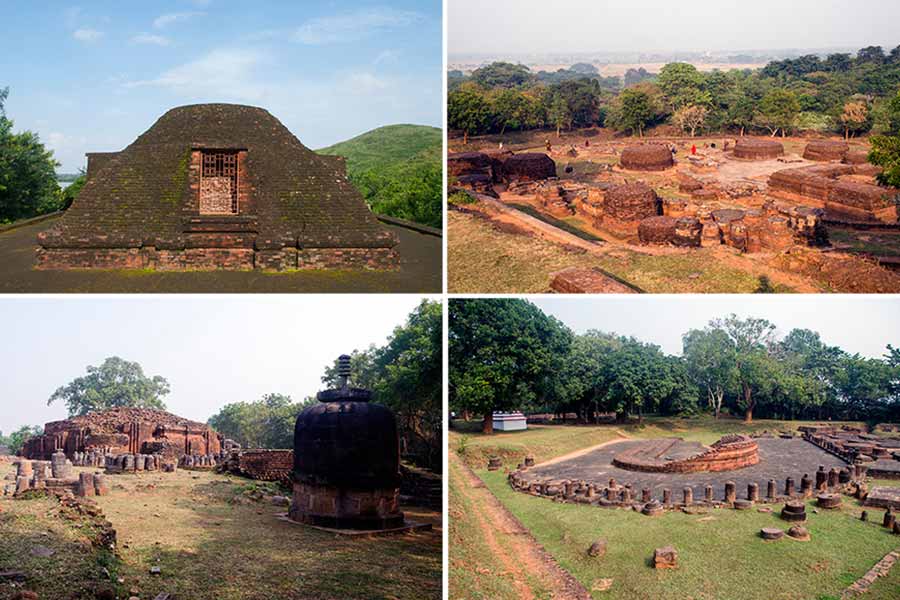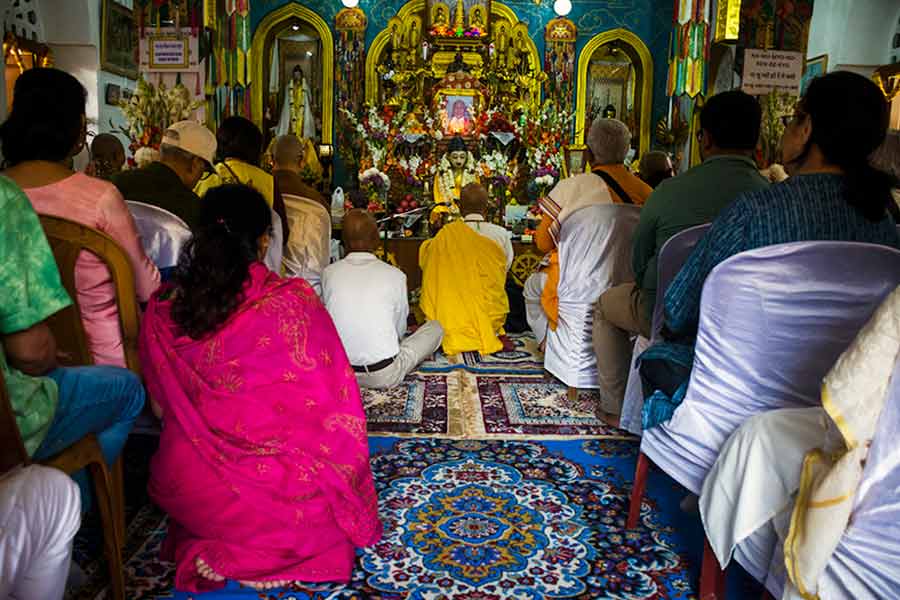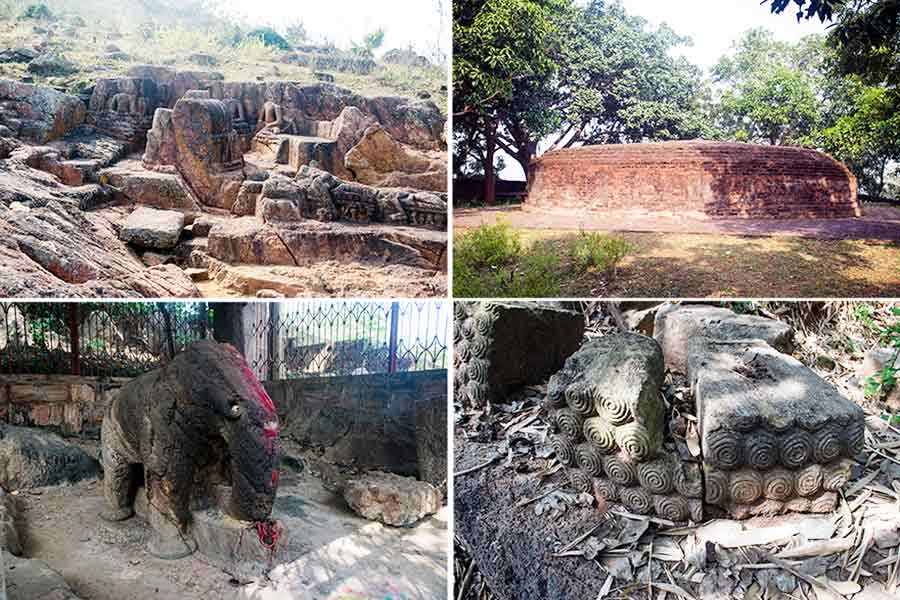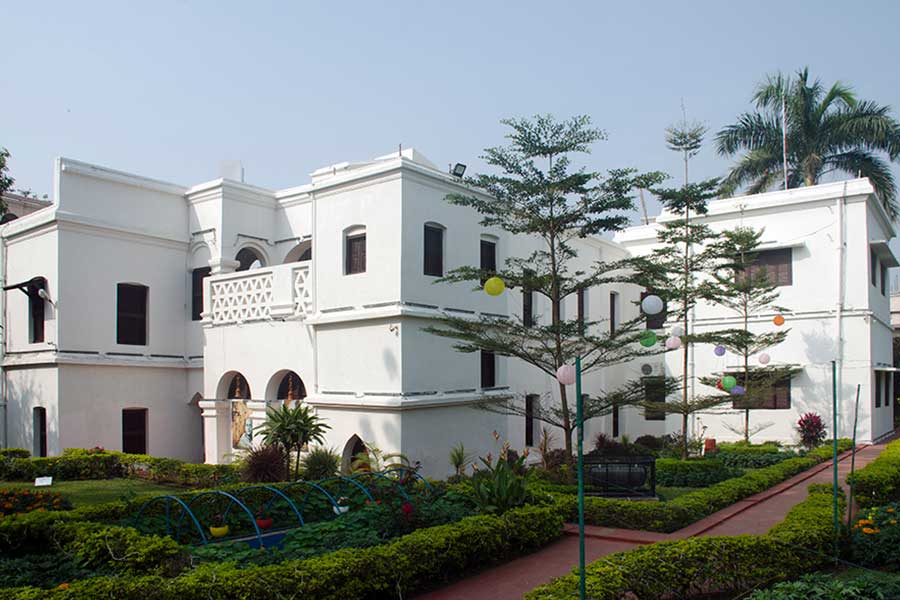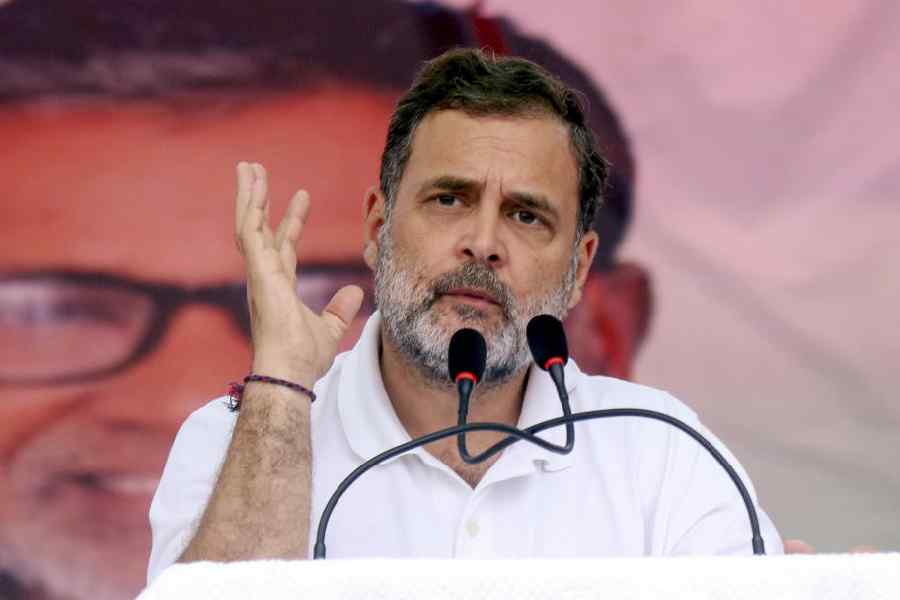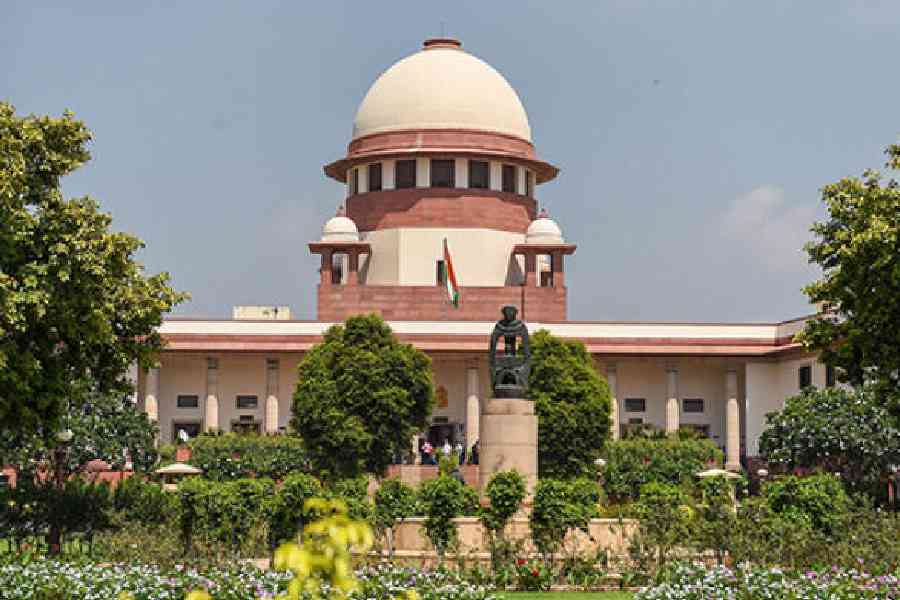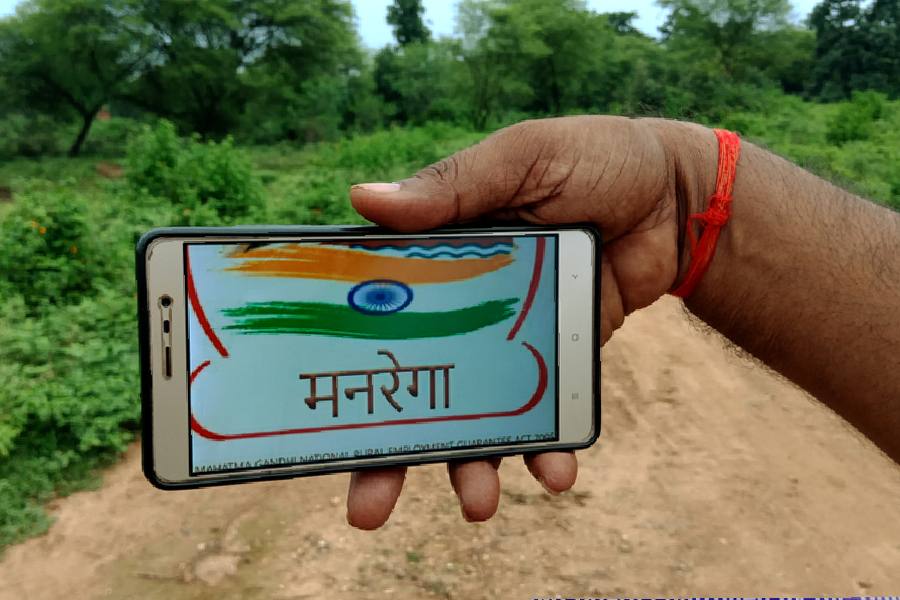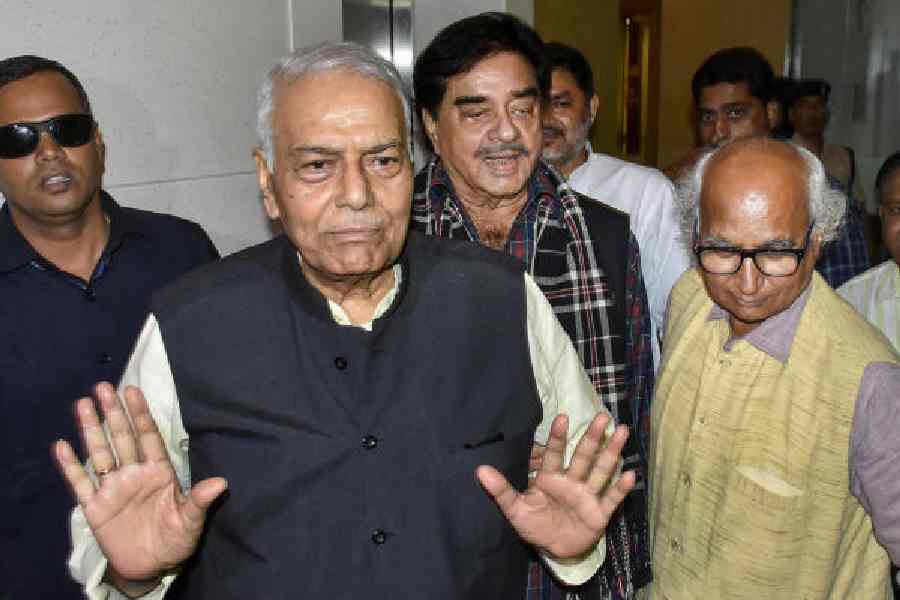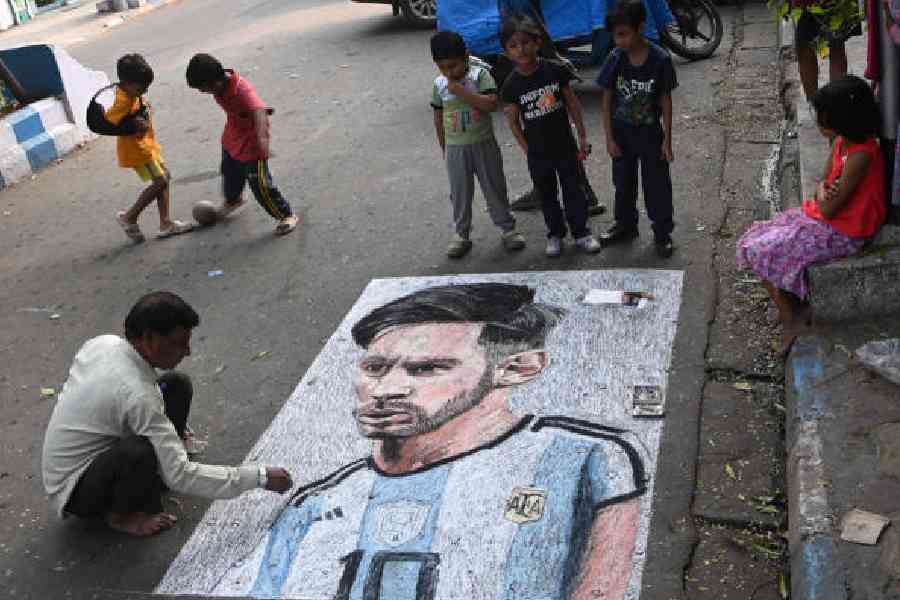Around 80km north-east of Bhubaneswar and on the way to Paradeep lies a collection of three Buddhist sites of Udaygiri, Ratnagiri and Lalitgiri, popularly known as the Diamond Triangle. The site belongs to the Vajyarajyan sect of Buddhism, which is popularly known as the Diamond Vehicle, and hence the name.
According to archaeological evidence, the monasteries were constructed in the 5th century CE and remained functional until the 13th century CE. They peaked between the 7th and 10th century CE. The monasteries were most probably abandoned in 16th century CE and fell into ruins.
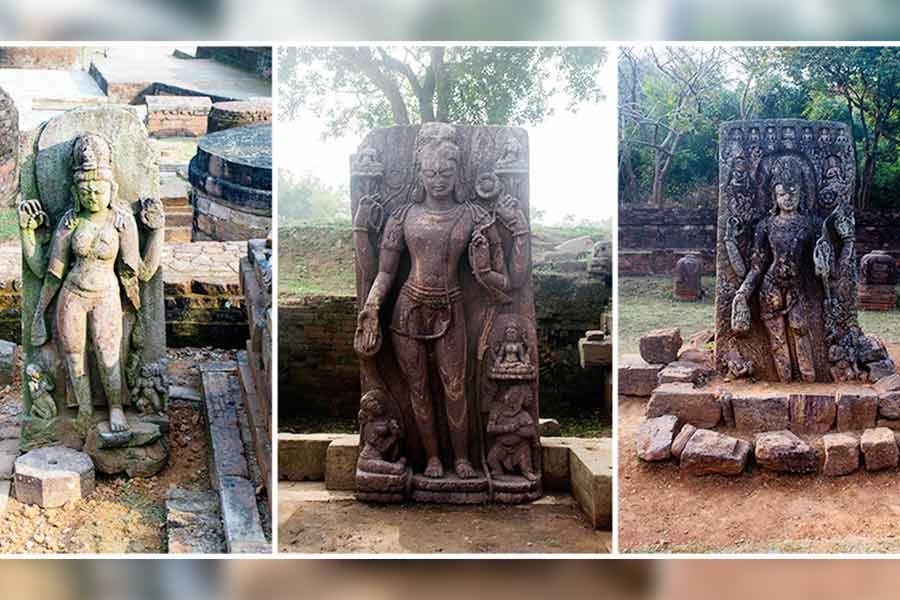
An assortment of statues from the Diamond Triangle
The sites were first identified in the late 19th century and after a series of digs revealed huge structures consisting of large monasteries and giant stupas along with a host of artifacts. The digs have spanned over a century and continues to this day revealing layers of history.
Udaygiri
Nestled between the two hills of Eastern Ghats, Udaygiri, the hill of the rising sun, is the most picturesque of the three sites of Diamond Triangle. It also happens to be the biggest and the least excavated sites among the three. The ruins are scattered over a large area and are divided into Udaygiri I and Udaygiri 2 sub-complexes. The sites of Udaygiri can be divided as follows:
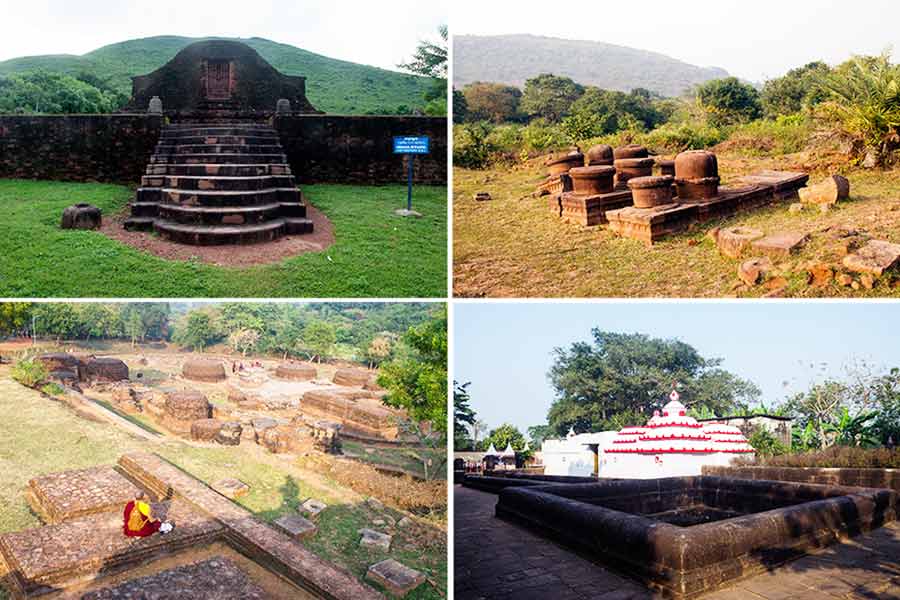
(Clockwise from top left) Maha Stupa, kitchen complex, stepwell and the stupa complex
1. Open-air exhibit
2. Stepwell
3. Triple Shrine
4. Stupa & kitchen complex
5. Monastery 2
6. Maha Stupa
7. Monastery 1
Open-air exhibit: Unlike Ratnagiri and Lalitgiri, Udaygiri doesn’t have a site museum. The exhibited unearthed objects from Udaygiri are displayed under the open sky. They consist of statues, broken decorative pillars and several other artefacts. From the open-air exhibit, two roads divert in the south and west directions. The southern road leads towards Udaygiri 2 sub-complex, consisting of the triple shrine, stupa and kitchen complex and monastery 2. The other road leads towards Udaygiri 1 sub-complex housing the maha stupa and monastery 1.
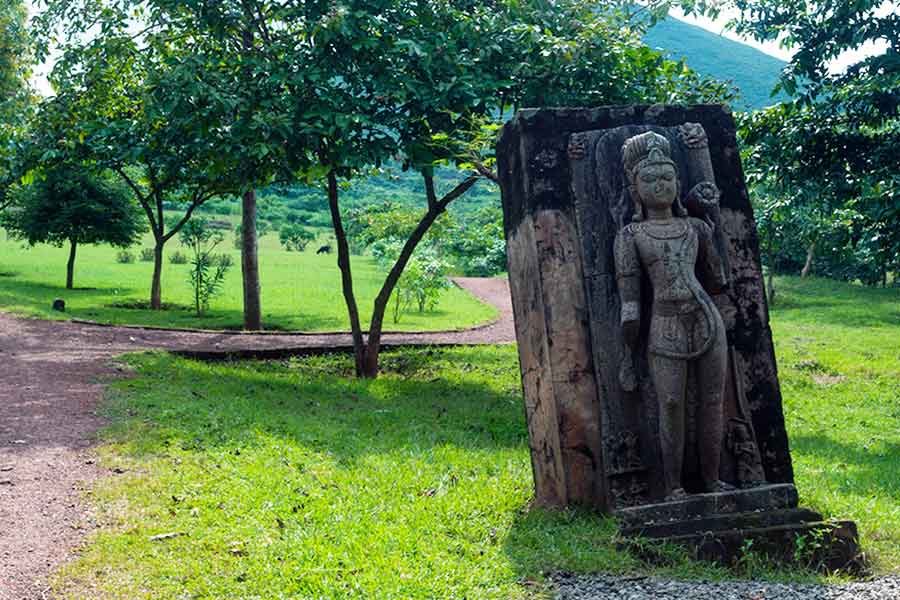
A statue from the open-air exhibits at Udaygiri
Stepwell: Next to the open-air exhibit stands a stepwell. The stone stepwell dates back to the 7th to 9th century CE and consists of a well connected by a long flight of narrow stairs leading to the water. Next to the stepwell stands a Hindu temple. The bright white coloured temple is built at a later date and follows the typical Odia temple architecture style.
Triple shrine: The road from the stepwell leads south towards the Udaygiri 2 sub-complex. It leads to an open space with the triple shrine located on the right. As the name suggests, the shrine has three cells enshrining stupas. Today, a four-armed statue of Tara is placed at the centre of the shrine.
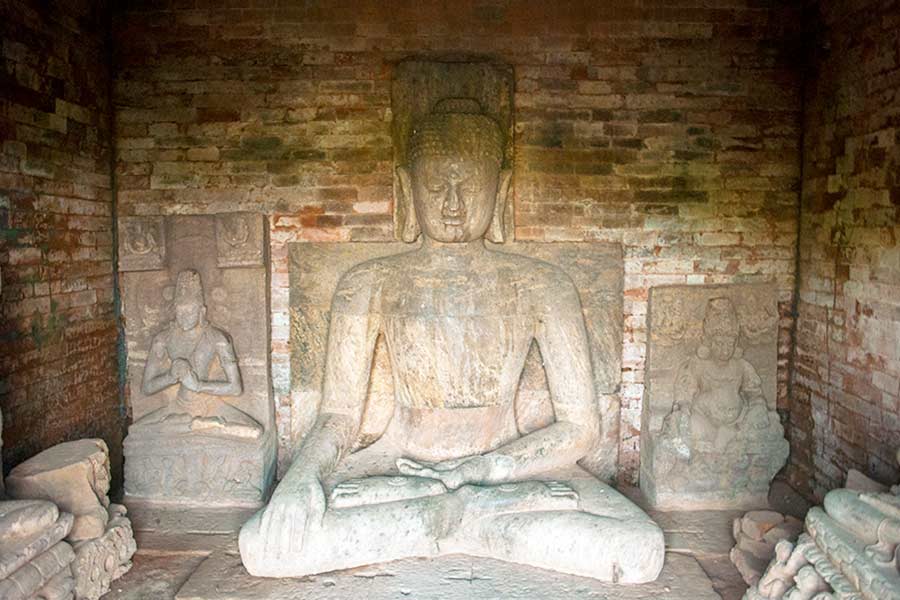
Maha Stupa, Udaygiri
Stupa and kitchen complex: Bang opposite the triple shrine is the stupa complex consisting of an assortment of brick and stone stupa. Some of the stupas have intricate ornamentation and there are several statues scattered among the stupas. The 1st century stupa complex was unearthed only during the turn of the millennium. Behind the stupa complex stands the kitchen complex and sadly, it is all in ruins.
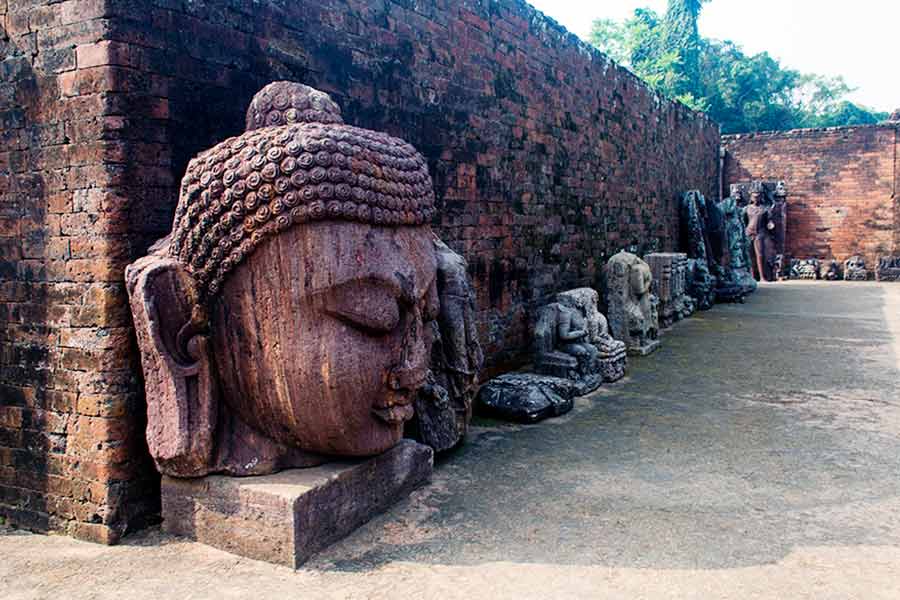
Buddha head and other sculptures displayed in the courtyard of monastery 1, Ratnagiri
Monastery 2
The monastery stands at the southern end of the Udaygiri 2 sub-complex. The 8th CE monastery was excavated during the digs of 1997-2000. The doubled-storeyed monastery has a central courtyard surrounded by cells. The centre of the southern side enshrines a giant statue of Buddha seated in Bhumisparsha mudra.
Maha Stupa: A dirt track from sub-complex 2 leads directly leads to sub-complex 1 bypassing the open-air exhibit and the stepwell. It leads to the maha or main stupa. The stupa standing on a square base houses four Buddha statues enshrined in niches on the four walls.
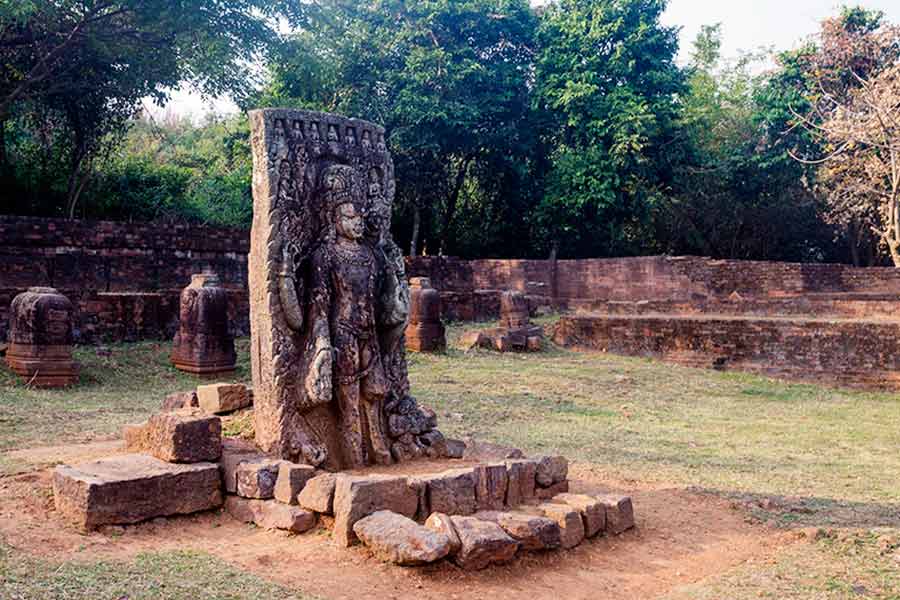
Statue of Tara from triple shrine of Udaygiri
Monastery 1: From the maha stupa the dirt trail continues westwards towards the monastery 1, which has a similar plan as its previous counterpart. The entry is from the east and lead to the open courtyard surrounded by cells. On the west stands the shrine approachable through an intricately carved door frame. The shrine houses a giant Budhha statue flanked by two other statues. However, a grill gate makes photography of the statue difficult.
Quick info
· Timings: Open from sunrise to sunset
· Entry fee: Free
· Photography: Allowed
Ratnagiri
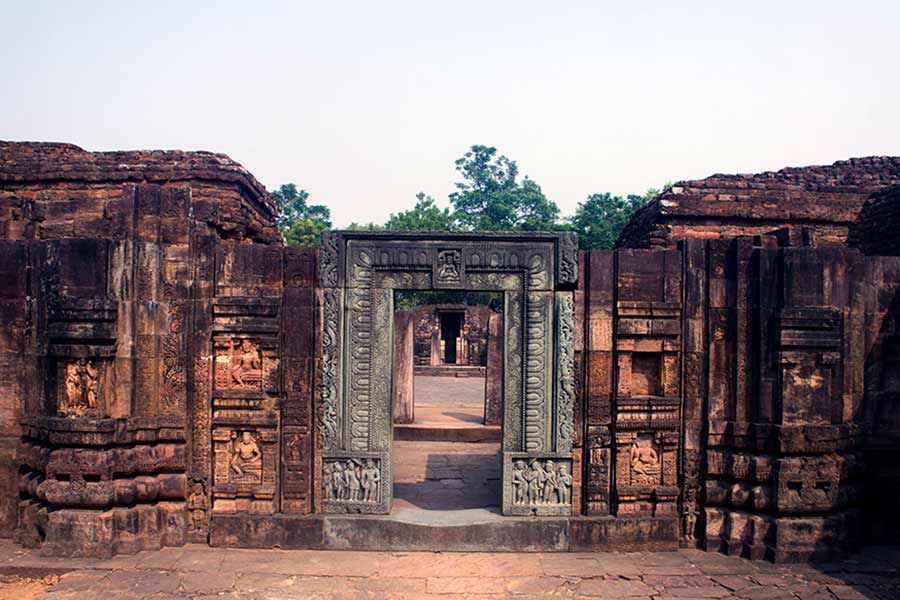
The grand stone gateway of Ratnagiri
Ratnagiri, the hill of the jewel, is located 15 km east of Udaygiri. Living up to its name the site is indeed a gem. It is located atop a hill and provides panoramic view of the surrounding. The strategic location of the monastery had protected it from invaders and provided seclusion to the monks. The site of Ratnagiri can be divided as follows
1. Votive stupa enclosure
2. Monastery 1
3. Monastery 2
4. Maha Stupa
5. Ongoing archaeological dig
6. Site Museum
Votive stupa enclosure: From the entry gate, a long flight of stairs leads towards the top of the mound. The stairs terminate next to a small enclosure housing several votive stupas. Over 700 votive stupas were recovered from the complex, out of which a few are arranged in a rectangular shape and enclosed by steel railings.
Monastery 1
Monastery 1 is the largest monastery in the complex. It is approached through an intricately curved stone door frame, leading on to an open courtyard. On the far end of the courtyard houses a giant statue of Buddha flanked on either side by statues of Padmapani and Vajrapani. The entire courtyard is decorated with artifacts collected from the excavation, which include Buddha head and several are sculptures.
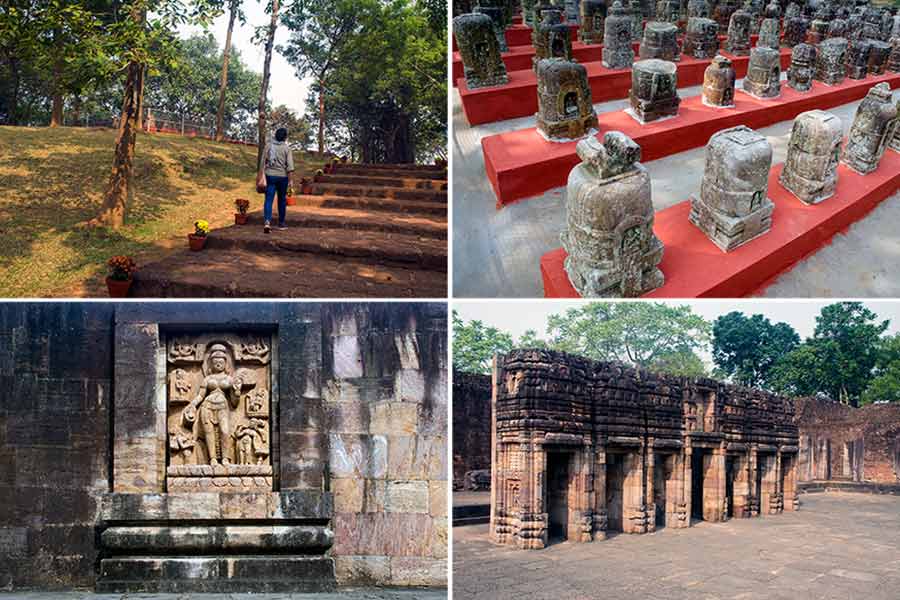
(Clockwise from top left) Stairs leading towards the votive stupa enclosure; votive stupa enclosure; inside monastery and statues on the outer wall of Monastery 1
Monastery 2
Adjoining monastery 1 lies the monastery 2. It has a similar floor plan but much smaller in size. It also lacks the grace and beauty of its next-door neighbour. A statue of Shakyamuni in Varada Mudra is enshrined in the complex.
Maha Stupa
On the highest point of the hill stands the maha stupa. The giant stupa is surrounded by several smaller stupas creating a complex maze. Some of this smaller (votive) stupas are arranged in circles. Just beyond the southern boundary of the complex stands the Mahakala Temple, dating back to the 15th century.
Ongoing archaeological dig
An extensive archaeological dig is in progress in front of the two monastery complex. Several artefacts, including three giant Buddha heads, have been dug out.
Site museum
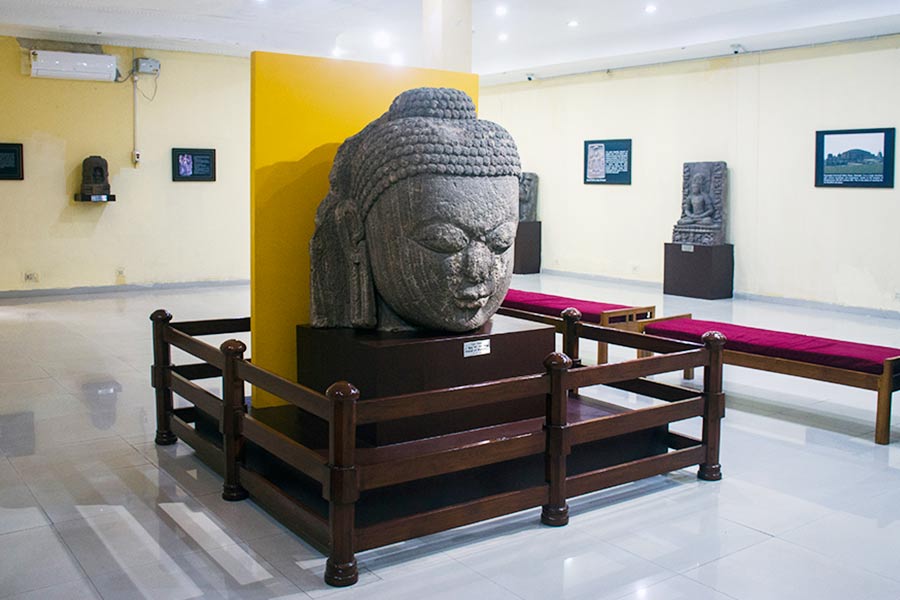
Inside Ratnagiri site museum
In Ratnagiri, the site museum is located outside the complex and is about 200m away. The museum houses 3,511 artefacts of which 252 are displayed in the three-terraced museum housing four galleries and an open-air display in front of the museum.
Quick info
Site
· Timing: Sunrise to sunset
· Entry fee: Rs 15
· Photography: Allowed except for the ongoing dig site
Museum
· Timing: Open all days except Friday from 9 am to 5 pm
· Entry fee: Rs 5
· Photography: Allowed
Lalitgiri
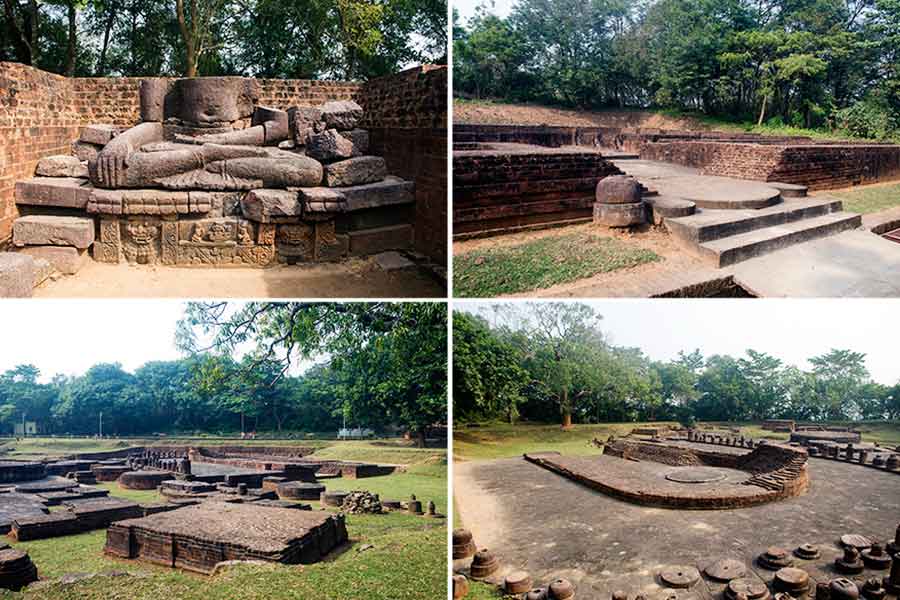
(Clockwise from top left) Broken statue of Buddha in Monastery 4; steps leading to the interior of Monastery 3; U-shaped arrangement of votive stupas in the stupa complex and the stupa complex
Lalitgiri is the easternmost of the three Diamond Triangle sites. Unlike its other counterpart, it lies on the right side of the road leading to Paradeep. Lalitgiri is the site where the sacred bone relics were unearthed. The site of Lalitgiri can be divided as follows:
1. Monastery 2
2. Monastery 1
3. Monastery 3
4. Monastery 4
5. Stupa complex
6. Maha stupa
7. Site museum
Monastery 2: From the entrance gate a pathway leads past the site museum toward the hilltop of Lalitgiri. A short distance away is a diversion on the right leading to monastery 2, located behind the site museum. It is the smallest and the least impressive of the Lalitgiri monasteries and is all in ruins.
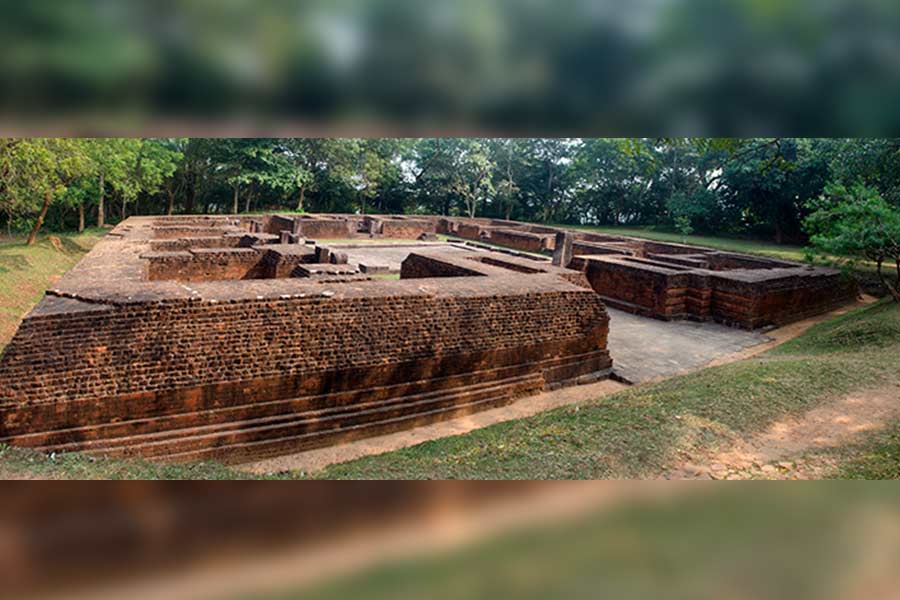
Monastery 4, Lalitgiri
Monastery 1 & 3: Back to the main trail and a short walk leads to monastery 1 & 3 located on the right side of the trail. These are in better condition and follows the typical plan with cells arranged around a central courtyard. No sculpture and statues are displayed in both the monasteries.
Monastery 4: Located on the opposite side of the road this is the largest of the Lalitgiri monasteries and houses a partially broken statue of Buddha with the upper part totally missing.
Stupa complex: Bang opposite to monastery 4 stands the grand stupa complex. It consists of a central stupa with votiv stupas arranged in a u-shaped around it. There are several stups of different size scattered all over the place.
Maha stupa: As usual it is located atop a hill and is approached by a flight of 45 steps. Excavation of this stupa during 1985-91 yielded 3 stone casket, out of which 2 contained bone relics. The circular stupa is not much impressive but the hill top provides a spectacular panoramic views of the valley below.
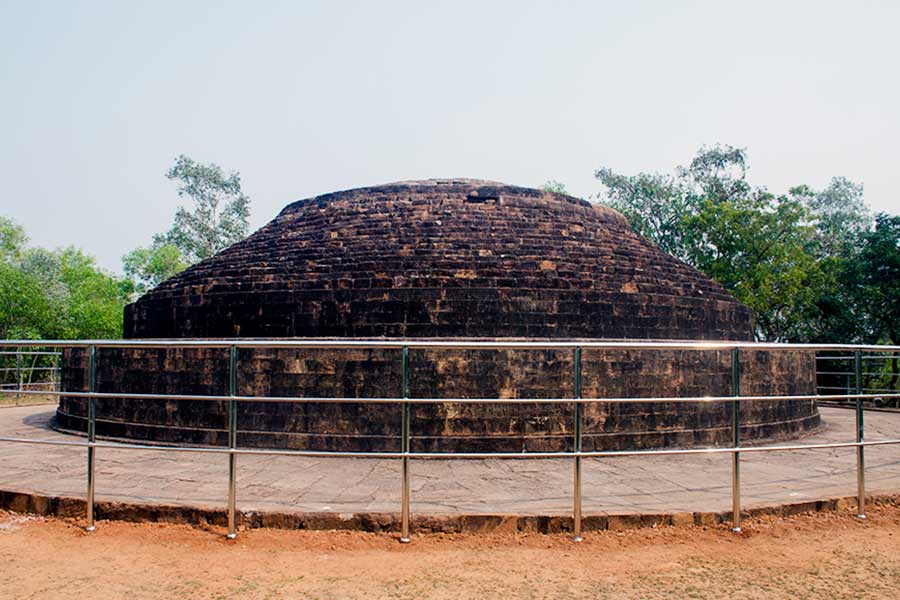
The Maha stupa at Lalitgiri
Site museum: The site museum is located within the complex and the present building came up in 2018. The exhibited are displayed in 7 galleries with gallery 4 displaying the relic caskets.
Quick info
Site
· Timing: Sunrise to sunset
· Entry fee: ₹15
· Photography: Allowed
Museum
· Timing: Open all days except Friday from 9 am to 5 pm
· Entry fee: Free (included in the entry ticket)
· Photography: Allowed

Inside Lalitgiri site museum
Travel information
Places to stay
Chandikhol (30km one way): Chandikhol located on Kolkata-Bhubaneswar highway is the nearest place to stay. Sadly, it only has a couple of bare basic hotels
· Cuttack: (60km one way) and Bhubaneswar (80km one way): Better hotels but longer journey
Getting around: Car is the only option and the whole trip will require 7-8 hours from Bhubaneswar
Places to eat: There are no places to eat beyond Chandikhol. Food and even water needs to be carried
Beyond the Diamond Triangle, there are several Buddhist archaeological sites (like Langudi), which may be combined with this trip.

